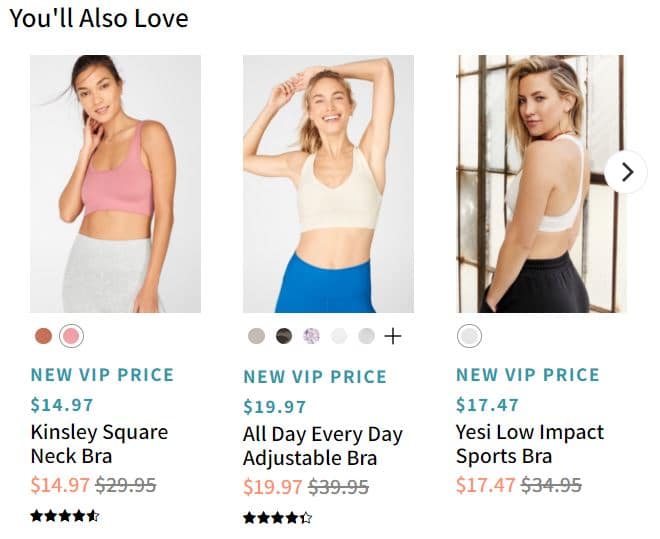There are two main approaches an ecommerce business can take to increase revenue… and we bet you can guess what they are. The first is reaching more customers. While this strategy is great in theory, it’s expensive and arduous in practice. The second approach is getting your existing customers to spend more money. With the right strategies and tools, boosting customer spend can be immensely effective, affordable, and simple. Step one? Start upselling products.
Upselling definition
Upselling is often confused with its not so distant cousin: cross-selling. However, there is a distinct difference between the two.
Upselling is all about convincing a shopper to spend slightly more by suggesting a similar, but more expensive, alternative to the product they’re thinking about buying. For example, if a customer is looking at a $100 coat, you could recommend coats in similar styles, but in a slightly higher price bracket to get them to spend more with you.
Likewise, if a shopper is in the market for a new television or laptop, you can gently suggest items from the same brand, but with better specs to persuade them to upgrade their purchase – much like a sales associate would in store.
Cross-selling, by comparison, is the art of getting shoppers to buy additional items to the product being viewed. This usually takes the form of complementary accessories – the boots to go with the coat, or the speakers that are compatible with the television mentioned above. More on cross-selling here!
Upselling strategies for ecommerce stores
As covered above, the basic principle behind this sales strategy is suggesting more costly versions of the items that a shopper is already looking for. What does upselling mean in practice? Below you can see how a customer looking for sports bras from Fabletics will also be shown other sports bras at higher price points.

Follow these four upselling strategies to ensure you are providing relevant and helpful suggestions to your shoppers.
1. Be cost conscious
There’s more finesse to upselling than just pushing your most expensive products on customers. Retailers need to be conscientious with their upselling strategies to avoid recommending items that are out of the shopper’s budget. At best, this approach can seem tone deaf to the customer’s needs. At worst, it can drive them to cheaper competitors.
For example, if a customer searches “washing machines under $500” on your website, you’d be remiss to advertise $3,000 washer-dryer combos as recommended products. Take advantage of rules to hide irrelevant – and out of budget – items to gently nudge shoppers towards the upsell.




